Restoration work at Great Lindeth
Jo Clayton and Darryl Kelbrick work on 33 acres of Ancient Semi-Natural Woodland and Plantation on Ancient Woodland Site in the Lake District National Park.
Their primary aim to conserve and restore the coppice cycle throughout the woodland has resulted in a variety of woodland products including specialist charcoal. One of their businesses, The Natural Charcoal Company advocates for the use of Bio Char for gardening, animal health (reducing methane and flatulence) and carbon sequestration as well as barbeque charcoal. Their businesses and woodland management aim to improve carbon storage and produce products that reduce methane
More traditional products such as sawn timber, furniture and woodfuel have also been produced over the years as part of diverse woodland products. The majority of the work is done on-site, adding value to the products within their woodlands before being sold. Jo makes luxury rustic furniture and ornamental crafts, which she sells online and from her studio at Grizedale forest. She also runs woodland-related arts and crafts workshops"
The woodlands are primarily a mix of birch and oak standards with hazel understory. The woodlands were coppiced in the past but this had lapsed around 50 years ago. Over the past decade, Jo and Darryl have brought much of the woodland back into a coppice cycle. This is ongoing work but forms the basis of both their woodland management objectives and their commercial needs, using products from coppicing for their businesses.
An area of around two hectares which was previously planted with conifer was left unmanaged. Given the focus on coppice produce, this area could be considered at a later date. Another area of native woodland of around one hectare had been cleared in the past and had not successfully regenerated to woodland. Regeneration had been significantly impacted by deer browsing and heavy shading from bracken.
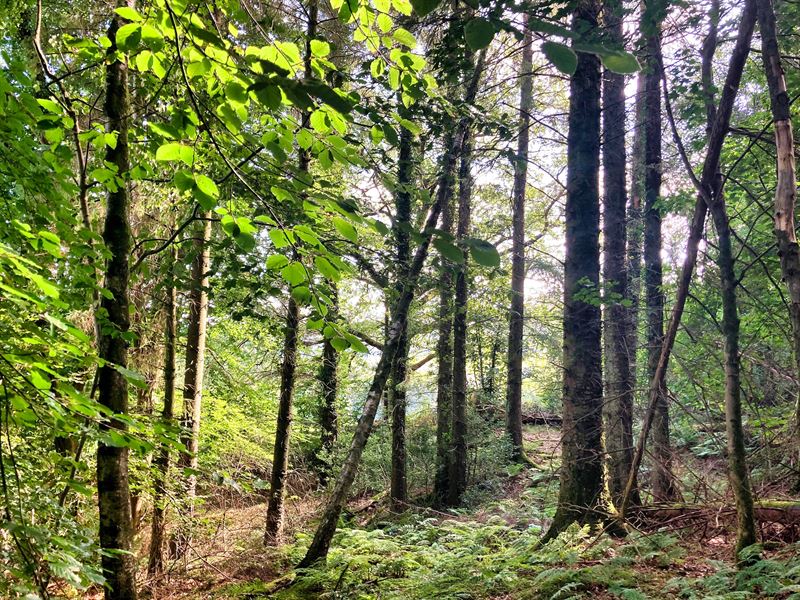
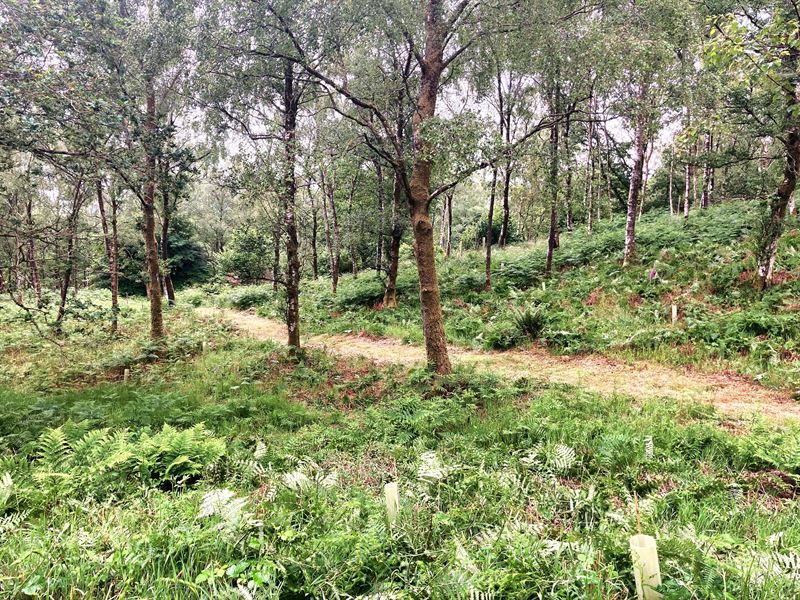
An opportunity for a further restoration
The Green Recovery Challenge Fund (2021) was put to good use to assist the ongoing Ancient Woodland Restoration. The funding was used to carry out thinning and fencing in the conifer area, with a view to gradually encourage native broadleaf natural regeneration within the area.
The Sitka spruce was reasonably straight and would yield a useful product, however, access constraints meant that a commercial thin was not a viable option. The plan was to selectively thin conifer from within the newly fenced area, as and when the need arose for timber, likely a few trees at a time over the coming decades. This was an ideal plan for gradual restoration, managing light levels and creating opportunities for regeneration.
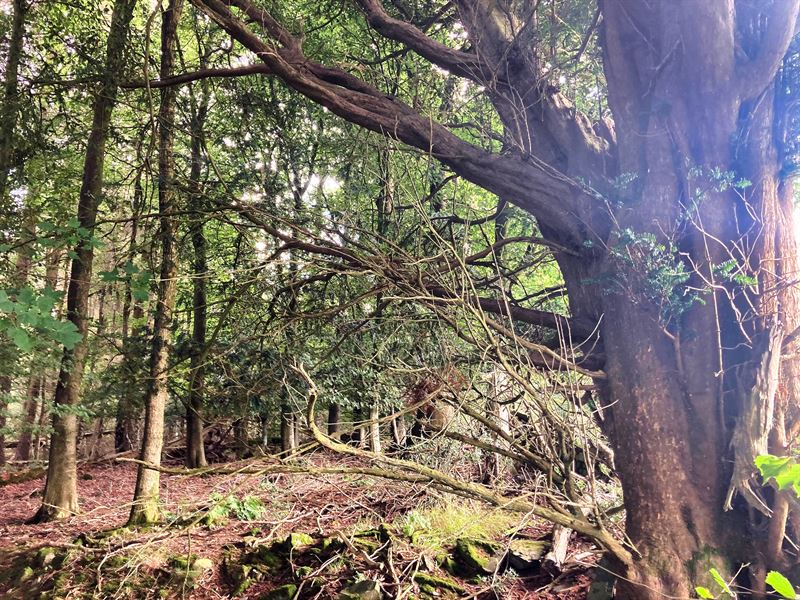
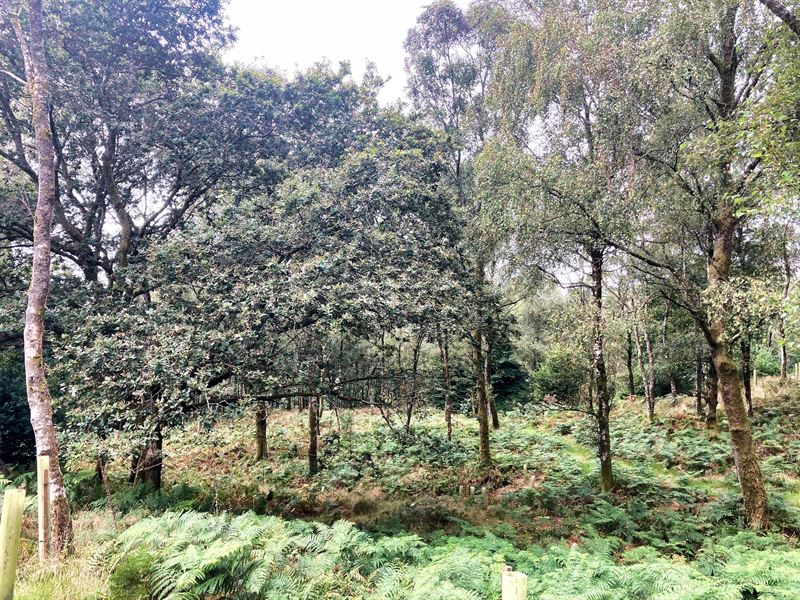
Storm Arwen
However, Storm Arwen (Winter 2021) changed the plan as around half the conifer trees were windblown, which incurred a significant clear-up cost to tidy up the windblow and extract the trees. Fortunately, the fencing work had not started, so there was no damage, but it did delay the work.
All was not lost though as the storm damage was spread well within the coupe and standing trees were maintained evenly throughout the area. It was a shock to the system and an upset to the plan, but the restoration programme was brought forward, as a result, leaving the area in a better state for natural regeneration.
The area of broadleaf which was cleared in the past was known to have seedlings and should regenerate. Browsing and bracken shading had been the issues and this was controlled by bashing and protection of seedlings. Storm Arwen resulted in a glut of spruce timber and it was proposed that some of this timber be made into fencing/tree stakes for protecting natural regeneration in the woodland.
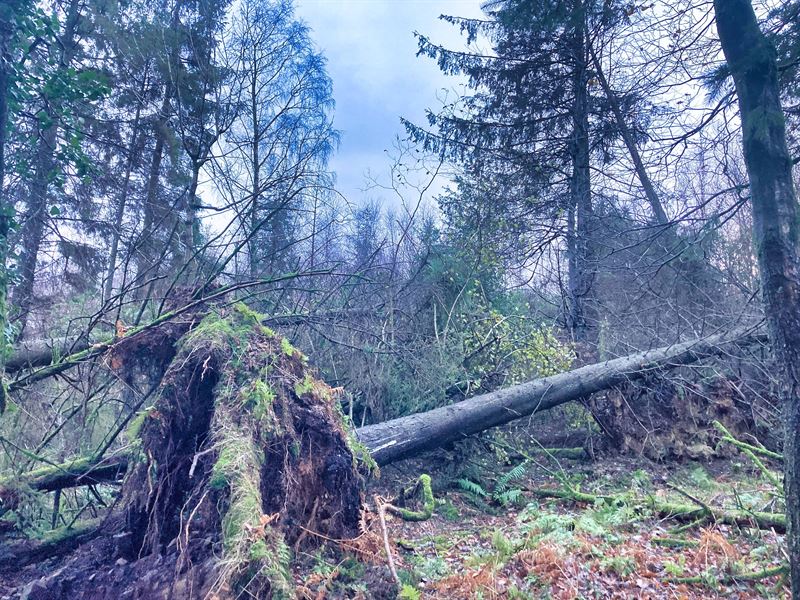
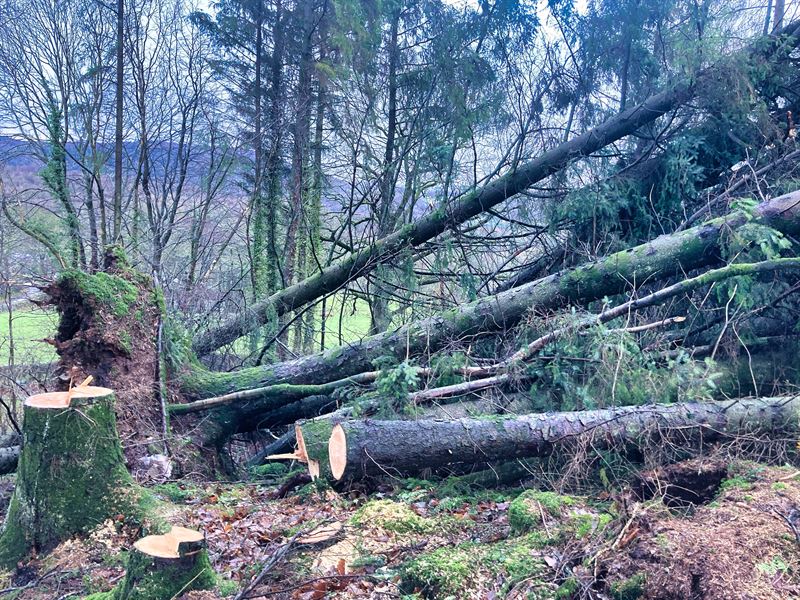
A Holistic Approach
As Jo and Darryl work the woodlands day in, day out, they are quick to notice where nature needs a hand, be it the protection of young trees or fixing a fence gap to deter the deer. This responsive approach to what the woodland needs allows them to capitalise on opportunities either seasonal, economic or climatic.
Viewing the management of their woodland as a continuous cycle and an integrated part of their lives and professions allows Jo and Darryl to have a holistic approach to woodland management. This results in the woodland being sustainable, both ecologically and financially.
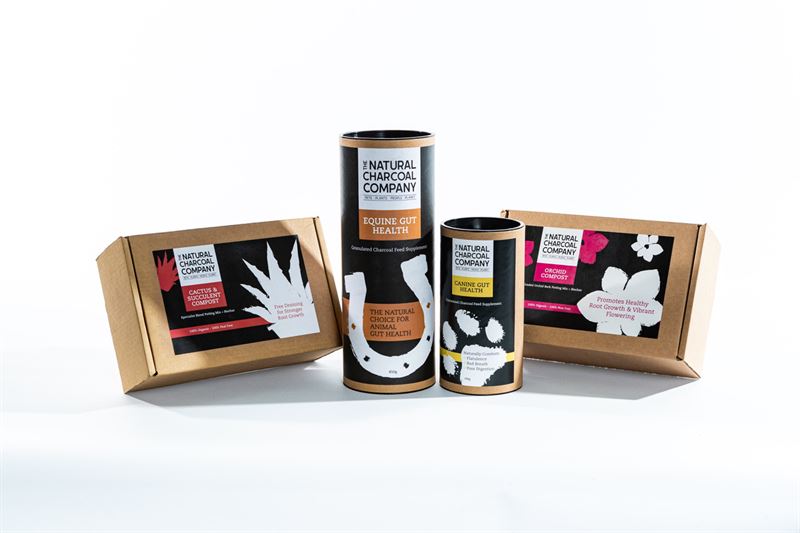
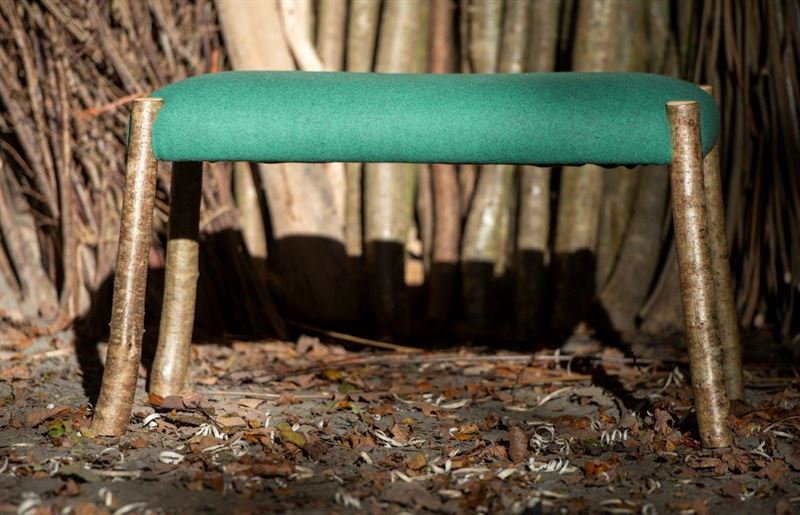
www.naturalcharcoal.co.uk
www.joclayton.co.uk